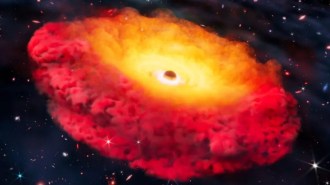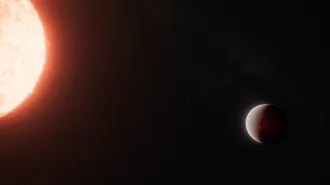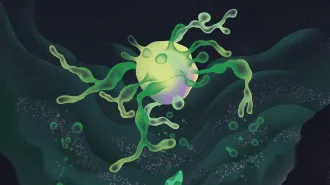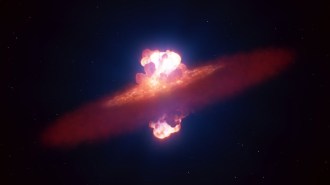Gaps in gas disks around stars may not always mark newborn planets
New research is prompting a debate over how to study infant planets
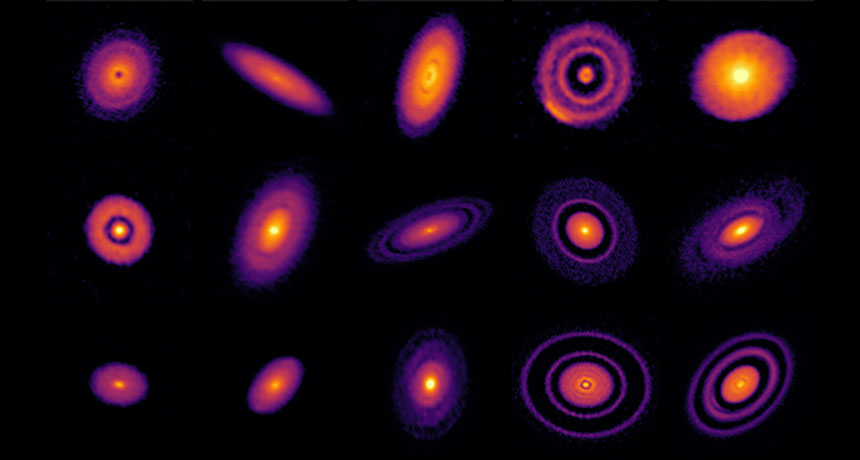
DISK DIVERSITY The swirling disks of gas and dust around young stars, some of which are shown here in images taken by the Atacama Large Millimeter/submillimeter Array in Chile, come in a variety of forms. New research raises questions about whether gaps in the disks mark the birthplaces of planets.
Sean Andrews/DSHARP/ALMA
- More than 2 years ago
The photo album of baby planets may be emptier than astronomers thought.
New research is prompting debate about the theory that gaps in planet-forming disks around young stars mark spaces where planets are being created in real time. It turns out that the planets that, according to simulations, would grow up in those gaps don’t resemble the full-grown planets observed around more mature stars.
So, maybe these broken-up disks don’t point to the formation of planets at all — or at least, not the most common kinds of planets that current telescopes can see.
“The question we raised, and we put it boldly, is whether those gaps in rings are really caused by planets, or they are caused by other things,” says astrophysicist Nelson Ndugu of Mbarara University of Science and Technology in Uganda. “Right now, it is too early to take a side.”
Baby photos
The basic planet formation recipe starts from a cloud of gas and dust, which collapses into a central star surrounded by a rotating disk (SN: 5/12/18, p. 28). Gravity draws the gas and dust into pebble-sized clumps, which cluster into boulders. Eventually those boulders grow large and gravitationally powerful enough to start hoovering up the surrounding gas, ultimately growing into gas giants. Theoretical models suggested that whole process should take about 10 million years to build a Jupiter.
In 2014, astronomers got what looked like their first glimpse of this process in action. The Atacama Large Millimeter/submillimeter Array in Chile, or ALMA, snapped a shot of the young star HL Tau, about 450 light-years away in the constellation Taurus, that showed a disk interrupted by dark gaps (SN: 11/29/14, p. 32).
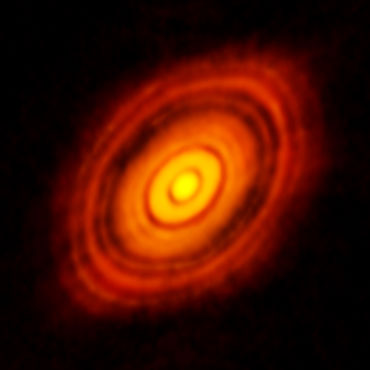
Trouble is, the planets orbiting PDS 70 are still the only examples. The theory didn’t quite fit for HL Tau, either: The star was only 1 million years old, too young to have gotten so far in forming a planetary system.
“It didn’t really make sense,” says astrophysicist Nienke van der Marel at the Herzberg Institute for Astrophysics in Victoria, Canada. In February, she and her colleagues published in the Astrophysical Journal a survey of 16 other protoplanetary disks, with ages ranging from less than half a million years to more than 10 million years. All of the disks were broken into gaps and rings, rather than being smooth expanses of gas.
“That is hard to explain if it’s caused by planets,” she says. If all of those gaps marked spots of planet formation, that would mean “planets must form extremely fast.”
Middle step mismatch
Even if planets were responsible for all the gaps observed, things still don’t add up, Ndugu and colleagues argue in a paper posted at arXiv.org on June 27. The researchers ran computer simulations of planets growing up, and compared the resulting ringed disks to ALMA observations of 20 protoplanetary disks from a 2018 survey called DSHARP.
“We took this [survey] as a middle step for our formation simulations to see what actually happens,” says astrophysicist Bertram Bitsch of the Max Planck Institute for Astronomy in Heidelberg, Germany. The team then let the simulations run until the disk was gone, either coalesced into planets or blown away by the star’s radiation.
Both steps of the simulation produced results that deviated from what’s observed in the galaxy. First, the simulations suggested the outer reaches of disks needed about 2,000 times Earth’s mass in pebbles in order to grow planets that could open up the observed gaps. But most stars don’t have that much material in their disks’ outer reaches.

“We predict a certain population of planets which would be observable, but we don’t see them,” Bitsch says. Something is missing from the theory of how gaps in gas disks form, the team concludes.
Other options
It’s possible, of course, that the disks so far studied are exceptions to the rule. The DSHARP images focused on the biggest, brightest disks because they are easiest to spot, says survey team member Jane Huang of the Harvard-Smithsonian Center for Astrophysics in Cambridge, Mass. So comparing the potential planets in those disks to the entire exoplanet population “is not going to be a fair comparison,” she says.
Astronomers are also looking for other ways that gaps might be made in a disk. “Maybe there’s some exotic physics going on in the disks that doesn’t require planets,” van der Marel says. Her work published in February has ruled out one theory: that gaps represent “snow lines” around the star where various chemical elements condense from gas to solid. But there are still options involving magnetic fields, drifting currents or gravitational weirdness.
Those more exotic possibilities can’t explain every disk, though. It’s not even clear that those processes always happen in disks. So the planet-building theory, for all its shortcomings, might still be the best bet.
“One of the advantages of the planet explanation,” Huang says, “is that we know planets exist.”
